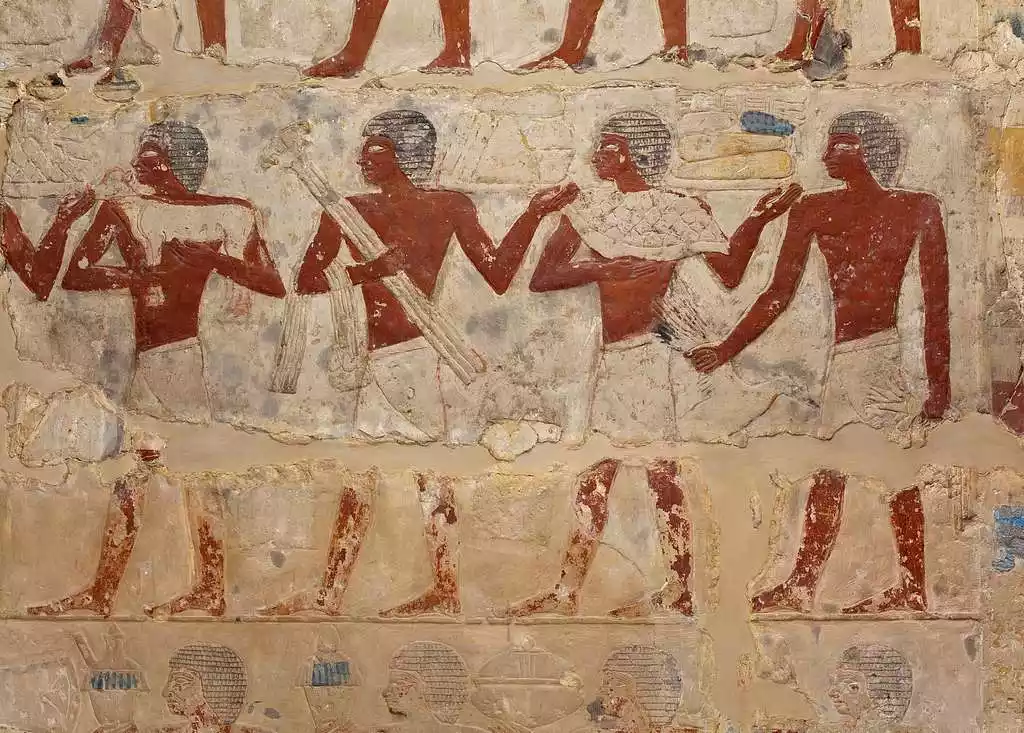Egyptian antiquities officials announced that an ancient painting has gone missing from the Saqqara necropolis, just outside Cairo. The artwork, carved on limestone, once graced the tomb of Khentika. It dates to the Sixth Dynasty of the Old Kingdom, around 2700-2200 BC. The tomb remained closed to the public since 2019. A British archaeological team discovered the absence in May during work inside the site.
Authorities did not immediately reveal exactly when the painting vanished. They confirmed its removal triggered an investigation. They described the painting as featuring the ancient Egyptian calendar’s three seasons: Akhet (flooding), Proyat (planting) and Shomu (harvesting).
Significance of the Artwork and Tomb
The tomb of Khentika is an old mastaba tomb built during the Old Kingdom. It gained reputation not just for its age but also because it bears an inscribed curse against intruders. That curse warns of divine punishment to those who violate the tomb. The calendar painting is rare because few surviving artworks depict the seasonal cycle so clearly in that era.
Furthermore, the location and preservation of the painting made it especially valuable. The limestone panel held both artistic and historical information. It linked geological cycles of the Nile to the rhythms of agricultural life in ancient Egyptian society.
Government Response and Investigation
Following the discovery, Egypt’s Ministry of Tourism and Antiquities referred the case to the Public Prosecution. Officials formed a specialised archaeological committee led by Amr Al-Tayebi, supervisor of Saqqara, to conduct a full inventory of the tomb’s contents. Secretary-General Mohamed Ismail confirmed these steps.
They emphasized their commitment to transparency and accountability. They promised to trace how the painting disappeared and to identify any suspects. Meanwhile, legal authorities are reviewing records, visitor logs, and maintenance data for any clues.
What it means for Heritage Protection
This incident raises serious questions about the security of Egypt’s archaeological treasures. Many sites already suffer from weak oversight and theft. The disappearance follows the theft of a 3,000-year-old bracelet from the Egyptian Museum, which was reportedly melted down.
Cultural experts say this case could harm Egypt’s reputation as custodian of ancient history. Tourists and scholars alike may worry about future losses. Moreover, it stresses how even closed and remote tombs are not immune to theft or misplacement.
What lies ahead
Investigators face several hurdles. First, determining when the painting went missing requires records that may not exist or are incomplete. Second, recovering the artwork could be difficult if it was smuggled or sold illicitly.
Also, restoring confidence among the public and international heritage bodies will take more than words. Egypt must strengthen its preservation protocols, improve access control to tombs, and ensure that inventories are kept and audited regularly.
Conclusion
The vanishing of this ancient painting from Saqqara marks not just a loss of heritage but a call to action. Egypt’s authorities have launched investigations, yet recovering the piece will prove difficult. More importantly, this event underlines a broader truth: protecting history demands vigilance, integrity, and serious investment. Only then can the world ensure that treasures from millennia past do not simply disappear.
Bonus Read: Thousands Celebrate Oromos’ Irreecha Thanksgiving in Ethiopia



